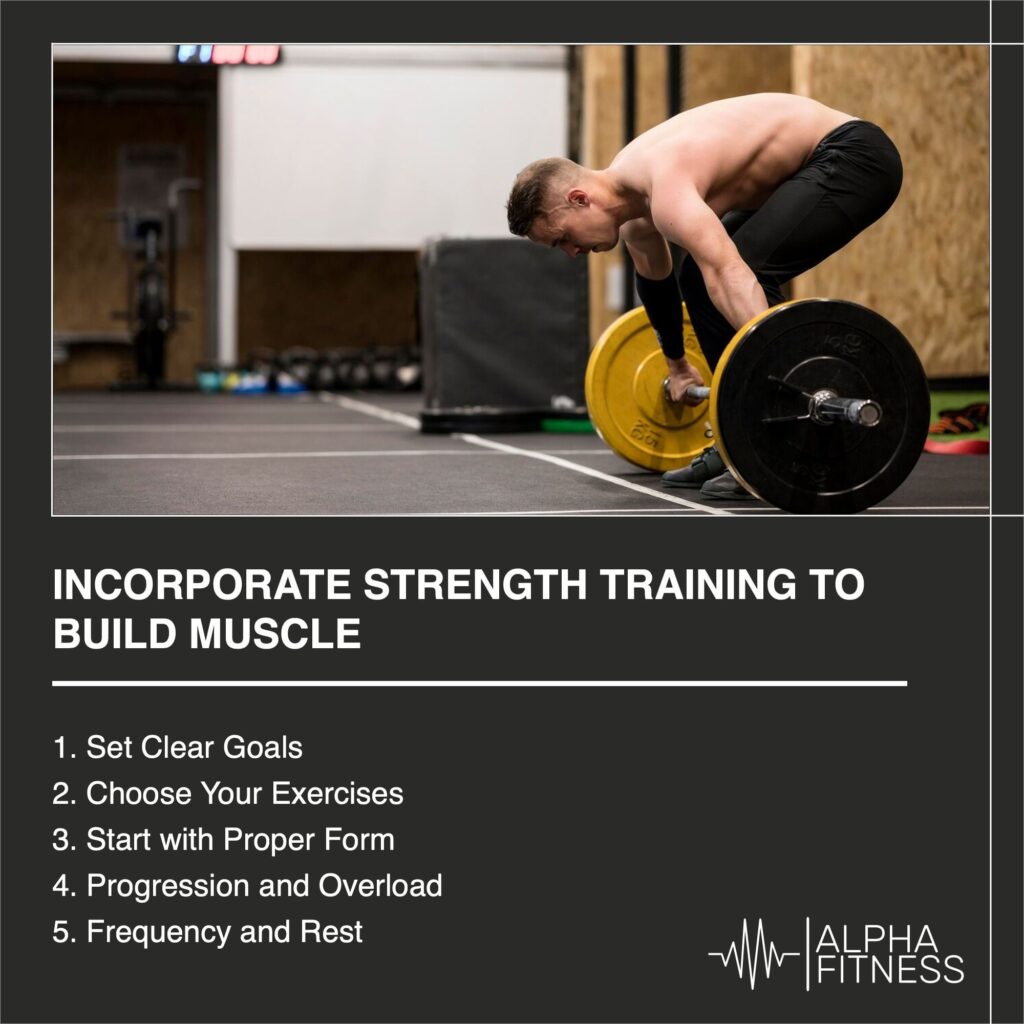
Incorporating strength training into your fitness routine is an excellent way to build muscle, improve overall strength, and enhance your physical fitness. Here’s a comprehensive guide on how to get started with strength training to build muscle:
1. Set Clear Goals:
Define your goals and objectives. Do you want to increase muscle size, gain strength, or improve your overall fitness? Having clear goals will help you tailor your strength training program.
2. Choose Your Exercises:
Select a variety of compound and isolation exercises that target different muscle groups. Compound exercises, like squats, deadlifts, and bench presses, work multiple muscle groups simultaneously, making them highly effective for building muscle.
3. Start with Proper Form:
Proper form is crucial to avoid injury and maximize results. If you’re new to strength training, consider working with a certified personal trainer to learn the correct techniques for various exercises.
4. Progression and Overload:
To build muscle, you need to gradually increase the resistance or intensity of your workouts. This can be achieved by adding more weight, increasing the number of repetitions or sets, or adjusting rest intervals.
5. Frequency and Rest:
Aim to train each muscle group 2-3 times a week. Allow adequate rest between sessions to promote muscle recovery and growth. Muscles grow during the recovery phase.
6. Nutrition:
Your diet plays a significant role in muscle building. Ensure you are consuming enough calories and protein to support muscle growth and repair. Lean protein sources, complex carbohydrates, and healthy fats are essential components of a muscle-building diet.
7. Hydration:
Stay hydrated before, during, and after your workouts. Dehydration can hinder muscle function and overall performance.
8. Recovery:
Prioritize recovery, which includes adequate sleep, stretching, and mobility work. Recovery is essential for muscle repair and growth.
9. Cardiovascular Exercise:
While strength training is the primary focus for building muscle, incorporating cardiovascular exercise can help improve overall fitness and maintain a healthy cardiovascular system.
10. Track Progress:
Keep a workout journal or use fitness apps to track your progress. Record the exercises, sets, reps, and weights used. This helps you make informed adjustments to your training program.
11. Safety:
Use proper safety equipment, such as weightlifting belts and gloves if necessary, to protect yourself during strength training.
12. Rest Days:
Give your muscles time to recover by scheduling rest days into your training plan. Overtraining can hinder muscle growth.
13. Consult a Professional:
If you’re new to strength training, it’s advisable to consult with a fitness professional or personal trainer. They can help create a customized program that aligns with your goals and fitness level.
Remember that building muscle is a gradual process, and consistency is key. It’s also important to listen to your body and avoid pushing yourself too hard, which can lead to overtraining and potential injuries. Be patient and stay committed to your strength training routine, and you’ll likely see positive results over time.
Below is a list of useful links:



